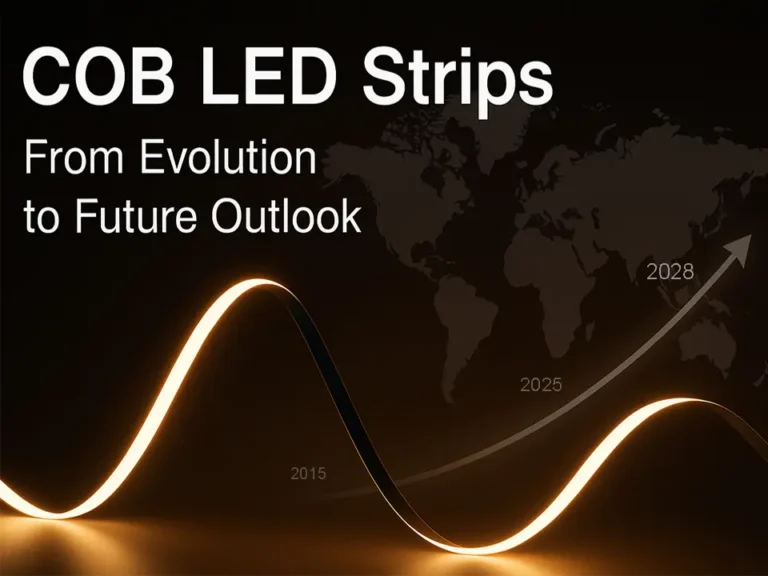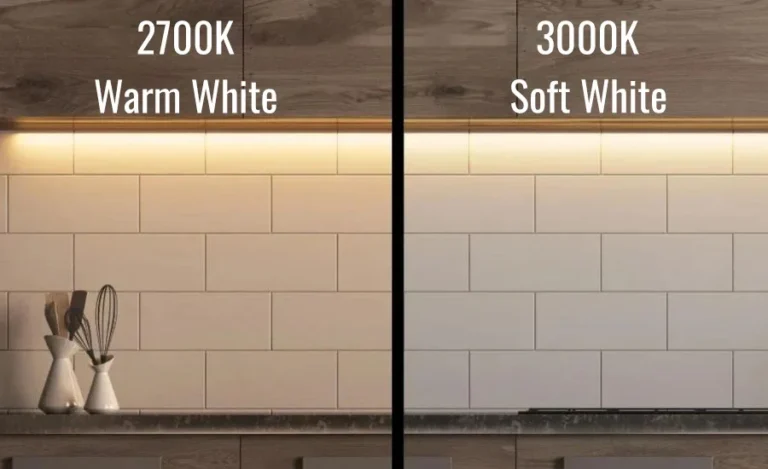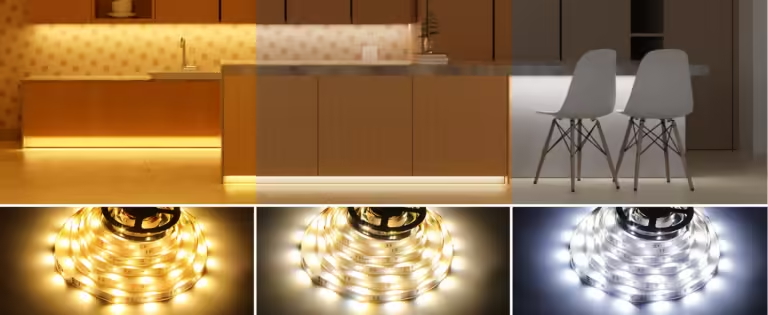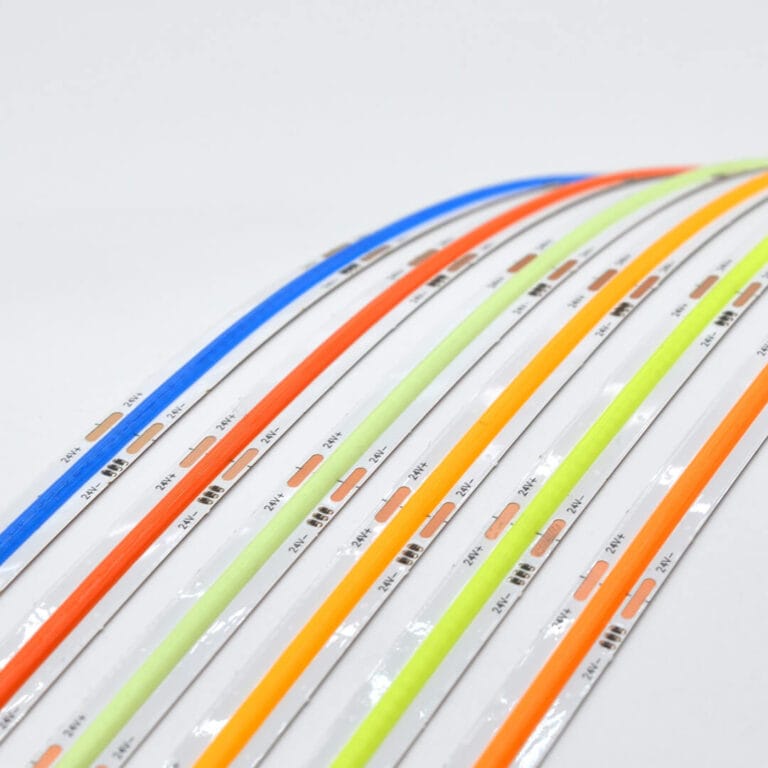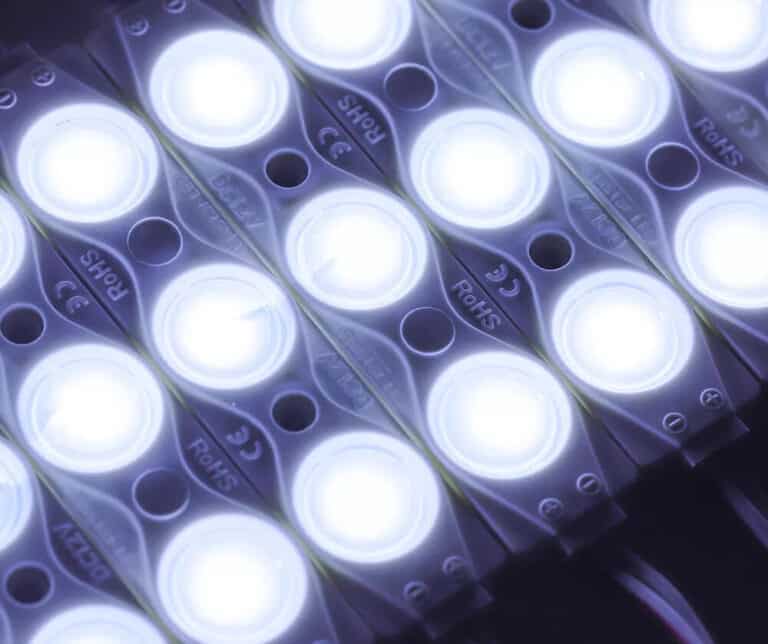How much do you know about LED waterproof strip light technology? There are simple processes like spray adhesive and drip adhesive, as well as more complex ones like tubing, potting, extrusion, and coating. Each of these processes has its own specific applications. If you only need basic waterproofing, you can choose spray adhesive, drip adhesive, or coating processes. However, if you require high-grade IP68 waterproofing, we recommend using potting or extrusion processes.
It is important to note that not all LED strip lights are suitable for a particular waterproofing process. For example, for RGB-type COB strip lights, using the extrusion process for waterproofing is inappropriate because the chips in COB strip lights are fragile, and the extrusion process involves high pressure and temperature, which can easily damage the chips and LEDs. However, using the nano coating process can perfectly address such issues.
SignliteLED has been deeply involved in the LED strip light industry for over a decade. Through relentless exploration and effort, we have accumulated extensive experience in waterproof products. Leveraging our industry-leading waterproof technology, we ensure product performance while helping you select the correct waterproofing process.
While many may be familiar with the first five waterproofing processes for LED strip lights, nano coating-based waterproofing is still unfamiliar to many. Below, I will guide you through a detailed understanding of nano coating-based waterproof LED strip lights.
What is a nano–coated LED waterproof strip light?
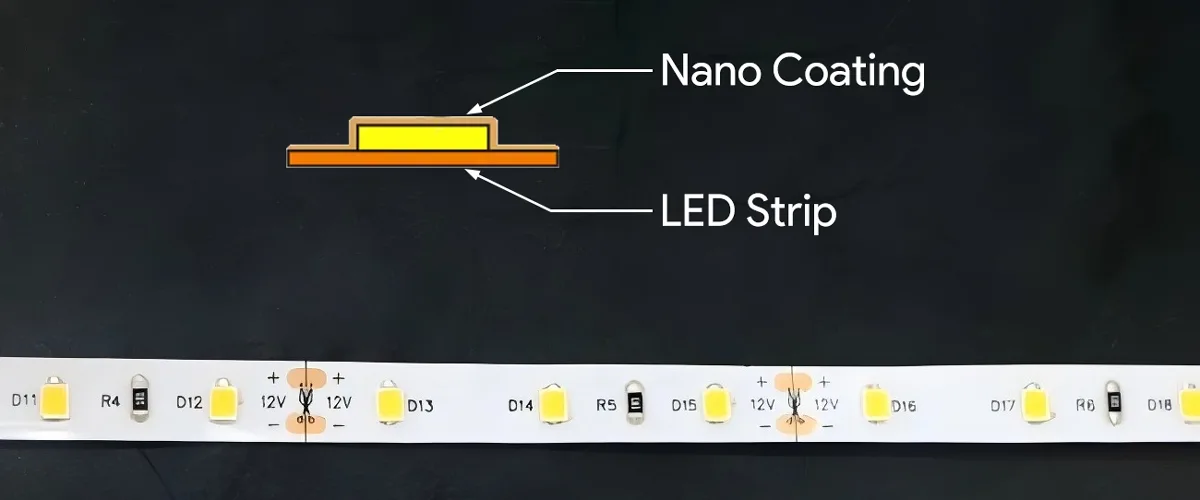
A nano-coated waterproof light strip is an LED light strip that achieves waterproof functionality through the use of special surface coating technology. The core of this technology involves depositing a protective coating at the nanometer or micrometer level on the surface of the light strip, thereby providing a certain degree of waterproofing. Nano coating waterproofing is the process of forming and depositing thin film coatings on substrate materials. Depositing thin films of various materials on substrates is one of the key techniques in micro-nano processing. Thin films possess numerous distinct properties that can be used to alter or enhance certain aspects of the substrate’s performance. For example, they can be transparent, durable, and scratch-resistant; increase or decrease electrical conductivity or signal transmission; and the thickness of the thin film deposition ranges from nanometer to micrometer scales.
Although nano coating has a thickness of only the nanometer level and is barely visible to the naked eye, it possesses powerful protective capabilities. It can achieve full coverage on the surface of the LED strip. Such a nano coating layer forms a superhydrophobic layer on the surface of the LED strip, similar to the lotus effect. When water comes into contact with the nano coating surface, it quickly forms droplets that roll off rather than adhering to the LED strip and penetrating into the interior. By leveraging this hydrophobic property and applying a nano coating to the surface of the LED light strip, the light strip can easily meet the requirements of high-grade waterproof standards such as IP65 and even IP68. For an introduction to waterproof LED strip lights, please read the blog: LED Strip Lights Waterproof IP Rating Guide.

Nano-coated Waterproof LED Strip Lights
Main Model: FQW10T120A
LED Type: SMD2835
LED QTY per Meter: 60/72/120/128/140
PCB Width: 6mm/8mm/10mm
Color Temperature: 2700K – 6500K/customizable
CRI: >80
Input Voltage: DC12V/DC24V
Power per Meter: 6W/8W/9.6W/12W/14.4W/19.2W
Waterproof: Nano-coating process
IP Grade: IP65/IP67
Warranty: 5 years
Advantages of Nano-Coated Waterproof LED Strips
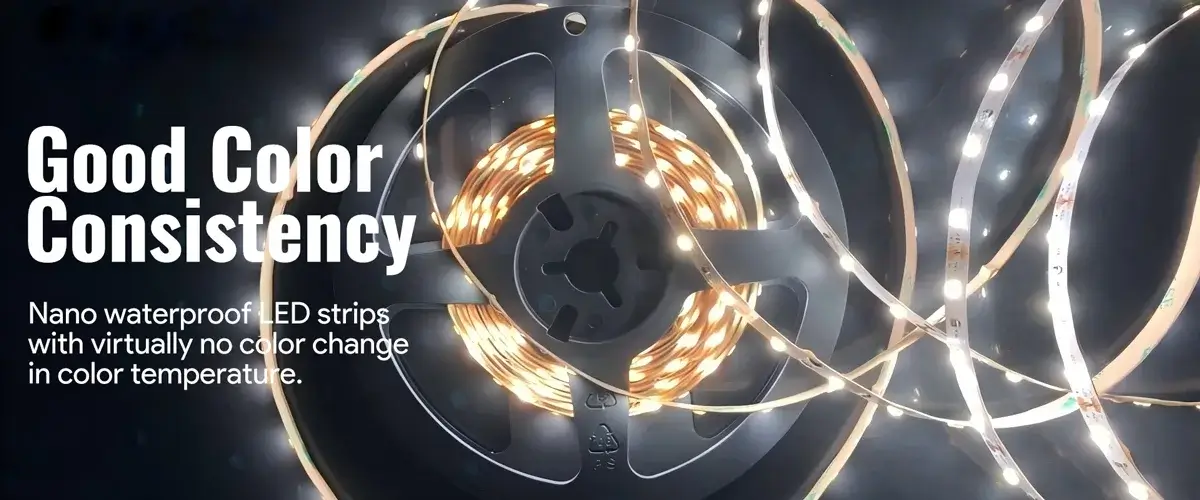
The nano coating process utilizes vapor deposition technology, where gaseous monomers are decomposed into free radicals and directly polymerize into a solid polymer film on the solid surface. As a result, the coating can penetrate any surface, regardless of its complexity, leaving no dead corners. Nano waterproof coatings, which are ultra-thin, have excellent heat dissipation properties, and are safe and non-toxic, are widely adopted in the LED industry. They currently represent one of the most effective waterproofing solutions and technologies for LED strip lights. Their advantages include:
- Excellent light transmission: In terms of waterproofing, the nano coating is applied at the nanometer and micrometer level, with controllable thickness (1-100 μm). Under waterproofing requirements, the thickness can be made extremely thin (30 nm), thus not affecting the heat dissipation of the LED chips. The coating is thin, colorless, and transparent, thus not affecting light transmission.
- Superior waterproof performance: The coating is prepared using chemical vapor deposition (CVD). The monomers formed after decomposition are nanoscale, exhibiting strong penetrating ability. They can penetrate into the increasingly narrow gaps between LED chip solder joints to form a continuous “seamless” barrier coating, effectively preventing external moisture from damaging LED products.
- Preserves original product performance: The nano-waterproof coating has excellent conformability during preparation, allowing it to form a thin protective layer on the surface of the product according to its appearance without adding weight or affecting assembly. It even looks the same as before nano coating, which is its magical feature.
- Suitable for harsh environments: In daily life, corrosive substances such as sweat, rainwater, and airborne pollutants can erode the surface of LEDs or light strips, causing solder pads to rust and LED components to fail. The nano coating technology creates a highly dense and stable isolation layer on the surface of the light strip, effectively preventing direct contact between corrosive substances and the substrate, thereby inhibiting the progression of material aging and corrosion. Under standard salt spray test conditions, nano-coated LED strips demonstrate exceptional corrosion resistance, maintaining optimal performance in harsh environments over extended periods. The coating withstands temperatures up to 140°C and as low as -200°C, offering excellent resistance to salt spray, voltage, and UV radiation.
- High density: The coating can be applied to various shaped surfaces, including sharp edges and cracks, offering an economical, clean, simple, fast, and high-volume processing solution.
- Environmentally friendly: The transparent coating does not affect the appearance of the product and is harmless to humans.
From the perspective of LED strip manufacturers, the nano coating technology offers significant cost advantages. It reduces the use of sealing materials such as silicone, thereby lowering the overall manufacturing cost of the product. Other waterproofing processes can increase the weight of the LED strip and alter its color characteristics, such as potting.
For example, after potting, the light transmitted through the material of a 4000K color temperature LED is affected, causing the color temperature to rise to 5500K, which poses significant challenges for both production and users. The nano coating process does not have these issues. Due to the ultra-thin nature of nano-coated light strips, the product has better heat dissipation, and the light color remains virtually unchanged, further enhancing the product’s reliability. For a comparison of color temperature changes before and after waterproofing between non-waterproof and waterproof LED strips, please read the blog: What are the types of LED strips?
What are the two different processes used for nano-coating waterproofing?
Nano-coating waterproofing primarily employs two distinct thin-film deposition processes: PECVD (Plasma-Enhanced Chemical Vapor Deposition) and Parylene (Chemical Vapor Deposition).
PECVD Coating
PECVD coating, or plasma-enhanced chemical vapor deposition technology, plays a unique role in enhancing the waterproof performance of light strips. Its working principle involves using glow discharge in the deposition chamber to ionize gas molecules, forming a highly reactive mixture of gas molecules, high-energy ions, electrons, and active free radicals. These particles undergo chemical reactions on the substrate surface of the light strip, depositing and growing into an extremely thin and dense nanocoating (such as silicon dioxide or silicon nitride).
PECVD nano-coating technology offers significant advantages over traditional structural sealing, three-proof coatings, and polyimide protective film technologies. It not only provides superior protective performance but also demonstrates unique competitiveness in terms of environmental friendliness, cost, and film thickness control.
PECVD nano-films can precisely control film thickness, offer superior film performance, better coating performance, a wider range of applications, and higher yield rates, thereby reducing post-sales maintenance costs. PECVD technology has a clear cost advantage over Parylene. This is also one of the main reasons why international tech giants are choosing PECVD technology to replace the original Parylene technology in their next-generation products.
Parylene Coating
Parylene coating is a branch of chemical vapor deposition (CVD) but does not require plasma. Parylene raw material is a powdered material placed in the evaporation furnace of the coating equipment. Under vacuum conditions at 150°C, the solid raw material is vaporized into a gaseous state. Then, under thermal decomposition conditions at 650-700°C, the gaseous raw material is cracked into reactive monomers. The gaseous monomers deposit and polymerize at nanometer-scale speeds at room temperature, forming an organic polymer film (polyparaxylene). This deposition process is CVD.
The thickness of the Parylene protective film is approximately several dozen micrometers, while the PECVD protective film is even thinner, at only several dozen nanometers. When sprayed onto the surface of a lamp body, such a thin coating is virtually invisible to the naked eye.
Comparison of Parylene With Other Coatings

- The film thickness is uniform and the shape is consistent.
- Good coverage around the edges.
- The room temperature is constant, and there is no shrinkage pressure.
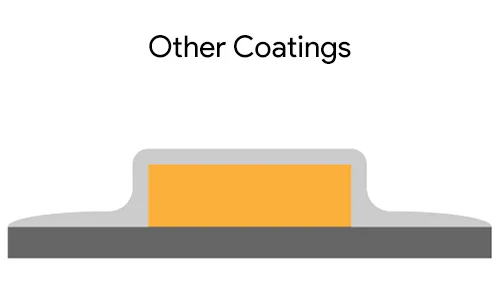
- The film thickness is uneven, and the shape has changed.
- The coverage around the edges and feet is insufficient.
- The shrinkage pressure from heat curing cannot be withstood.
Nano-coated waterproof LED light strips typically utilize Parylene nano-coating or PECVD nano-coating technology, which effectively provides waterproofing, dustproofing, and acid and alkali resistance and extends the service life. Nano-coated waterproof LED light strips achieve waterproofing by applying a layer of Parylene nano-coating to the surface of the light strip or using PECVD nano-coating technology.
Parylene coatings possess waterproofing, corrosion resistance, insulation, and acid/alkali resistance properties, significantly enhancing the waterproof performance and service life of the light strips. PECVD nano-coating technology forms a dense nano-scale film on the surface of the light strip, effectively blocking the intrusion of moisture and dust, achieving an IP67 waterproof rating. If cost-effectiveness and mass production efficiency are prioritized, choose PECVD; if corrosion resistance, water immersion, or complex structures are required, choose Parylene.
Comparison of Process Performance Between Two Nanocoating Technologies
PECVD nanocoating utilizes plasma-enhanced chemical vapor deposition to form a dense nanoscale film (thickness: 1–100 μm) on the surface.
It achieves IP67-rated waterproofing, resistance to salt spray and corrosion, and protection against UV aging. Since the coating is nanoscale, it does not affect component heat dissipation, extending product lifespan. It has a light transmittance of over 95%, uniform coverage, can penetrate tiny gaps, and provides comprehensive protection with no blind spots.
PECVD nano-coating has the drawback of expensive equipment and high initial investment, but unit costs decrease with scale; it requires a vacuum environment, has a complex process, and has high technical barriers; it is suitable for LED light strips, smartphone motherboards, outdoor lighting, etc.
Parylene micron-thick coating layers are thicker than PECVD coatings, have extremely low water molecule permeability, and exhibit excellent insulation properties under extreme temperatures (-200°C to 200°C). They can be applied to complex structures (such as circuit board solder joints) with uniform thickness and no pinholes and resist strong acid and alkali corrosion, making them suitable for extreme environments.
The drawbacks of Parylene micron coating include expensive raw materials and equipment, slow deposition rates, and the need to completely remove the old coating during repairs, which involves a complex process. The coating is also brittle and has weak resistance to physical impact. It is also suitable for LED light strips, military equipment, and high-end medical devices.
Comparison of the characteristics of two nano-coating processes
| Speciality | PECVD | Parylene |
| Material type | Inorganic (oxides, nitrides, etc.) | Organic polymer |
| Thickness | Nano to micron level | 0.1–100 microns (can be precisely controlled) |
| Uniformity | High flatness, slightly weaker coverage of complex structures | Full coverage with excellent penetration into sharp angles/crevices |
| Waterproofing | Dense moisture-proof, but multiple layers required for thin films | Ultra-low water vapor permeability (<0.1 g/m²/day) |
| Insulation | High dielectric strength | Excellent insulation (stable dielectric constant) |
| Temperature resistance | Typically ≤400°C | HT type resistant to 200°C; prone to low-temperature brittleness |
Comparison of Core Performance Between Two Nanocoatings
| Evaluation Item | PECVD | Parylene |
| Waterproof Rating | IP65-IP67 | IP65-IP68 |
| Film Thickness and Heat Dissipation | Nanoscale (10 nm-1 μm), has almost no effect on heat dissipation | Micron scale (0.1-100 μm), has a slight effect on heat dissipation of high-power LED chips |
| Environmental Resistance | Salt fog resistant, UV resistant, corrosion resistant | Extremely corrosion resistant (acid and alkali resistant, seawater immersion resistant) |
| Process Coverage | Suitable for flat surfaces, limited coverage for complex structures | Full coverage with no blind spots, penetrates solder joints/gaps |
| Optical Properties | High light transmittance (>98%), colorless and transparent | Slightly lower light transmittance (affected by film thickness), but uniform and glare-free |
| Mass production Cost | High equipment investment, but low per-unit cost (high-speed deposition) | High raw material and equipment costs, slow deposition rate (approximately 1 μm/h) |
PECVD production requires a vacuum environment and a plasma generator, with substrate temperatures ≤500°C and sufficiently fast deposition rates, making it suitable for semiconductor devices. Optical films and waterproofing for consumer electronics can be mass-produced; Parylene coating does not require a plasma generator, with a decomposition temperature as high as 650°C, substrate deposition at room temperature, but the equipment cost is relatively high, and the deposition rate is approximately 1 μm/h, resulting in lower efficiency, making it suitable for waterproofing complex components in military electronics and aerospace equipment. PECVD coating typically achieves an IP rating of IP65-IP67 for light strips; for IP68-rated light strips, Parylene coating is recommended.
For information on the manufacturing process and selection of waterproof LED strip lights, please read the blog: What Are The Waterproofing Processes Used In LED Strip Lights?
Summary
In outdoor landscape lighting, LED waterproof light strips are highly favored for their flexibility and decorative appeal. Outdoor LED light strips utilizing nano-coating technology perfectly address this issue. These light strips not only offer exceptional waterproof performance, maintaining stable illumination under various harsh weather conditions, but their ultra-thin coating also does not compromise the decorative effect of the light strips.
Nano-coating waterproof coating technology offers innovative solutions to the waterproofing and heat dissipation challenges faced by LED light strips. As technology continues to advance and costs further decrease, nano-coating is poised for broader application and adoption within the LED industry. Looking ahead, with the emergence of new materials and processes, waterproofing and heat dissipation technologies for LED light strips are set to unlock even greater potential for development.
